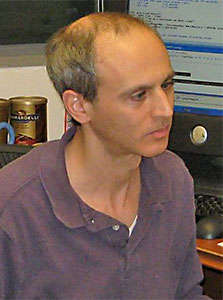A division of the Translational Addiction Medicine Branch
Section Chief
Contact
Location:
Biomedical Research Center
251 Bayview Blvd
Suite 200, Room 01B606
Baltimore, MD 21224
Phone: 667-312-5092
Email: david.epstein@nih.gov
About the Lab
The RAPT Section was established by Dr. Epstein in 2017 to bring the IRP’s treatment research into the age of predictive analytics and personalized medicine. Implicit in the name—“Real-world Assessment, Prediction, and Treatment”—is our intent to show that when addiction research moves forward, so do prevention and treatment.
So our watchword, even if it sounds like a buzzword, is actionable:
- We derive actionable information from our use of smartphones in everyday assessment of people’s moods, exposure to built and social environments, and drug use.
- We recently completed a set of projects assessing momentary, real-world experiences in a nationwide sample of people who use a substance called kratom, and we have been publishing results that we hope will inform policy, scientific theory, and clinical practice.
- We are gearing up to use similar methods, combined with data from wearable physiological sensors, in people who use cannabis. We are especially interested in whether that information can help us deliver mobile treatments, electronically, when and where they’re needed
- We formulate actionable ideas from neuroscience and laboratory-based behavioral sciences, collaborating closely with colleagues at the IRP and worldwide to translate their discoveries into treatments.
- In one current project with residential stays and laboratory sessions, in people who are on MOUD (medication for opioid-use disorder), we are testing an investigational new medication that could combine some of the advantages of currently available MOUDs like methadone and buprenorphine.
Our aim is to maintain a portfolio of studies that, taken together, address the whole continuum of causes of addiction, from the psychosocial to the neurobiological, and to use our wide in-house expertise to match the tool to the task for different kinds of patients.

